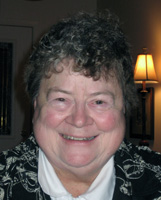
Another Example of The Power of One

Common Sense, Huge Impact
One of the lessons that I’ve learned visiting mental health programs in 46 states during the past four years is how often a small, common sense change in policy can have a huge impact on helping persons who are ill. 
I saw an example of this when I toured the Los Angeles City Jail, which many of you know has become the largest de facto public mental heath facility in our nation with an average population of 1,400 prisoners with mental disorders.
A Mother Who Lost Her Daughter But Is Saving Others One House At A Time
Today is Mother’s Day and I would like to tell you about an extraordinary mother who also is an amazing mental health advocate. Her name is Trudy Harsh and she lives in Fairfax, Virginia.
Trudy’s daughter, Laura, developed a brain tumor when she was eight years old. Doctors at Georgetown Hospital in Washington D.C. were able to remove it, but they warned Trudy that Laura would only live for six more years at best. 
Tasers and another fatality

Sex and the Saddle
“Why don’t you reporters simply tell the truth?” a frustrated public official once asked me.
Whenever I hear a question like that, I think about an incident that happened when I was a young reporter at The Tulsa Tribune in Oklahoma and a woman called and told me that she needed my help. 
She said her husband was in prison and that she was being sexually harassed by a high -ranking prison official. She claimed this man had threatened to have her husband beaten unless she did what the official wanted sexually.
Crisis Care Centers vs ERs
The first time Mike became psychotic, I drove him to a hospital emergency room. We didn’t know any psychiatrists and Mike needed immediate help. Taking him there turned out to be a mistake.
Emergency rooms are where everyone goes nowadays whenever they have any kind of health-related crisis, but many are poorly equipped to deal with psychiatric patients in the midst of a mental break. 
Some patients are turned away, as Mike and I were, without getting help. Or a patient might be held down and given a shot of Haldol or another strong anti-psychotic that will help stabilize him but also can turn him into a walking zombie for days.


